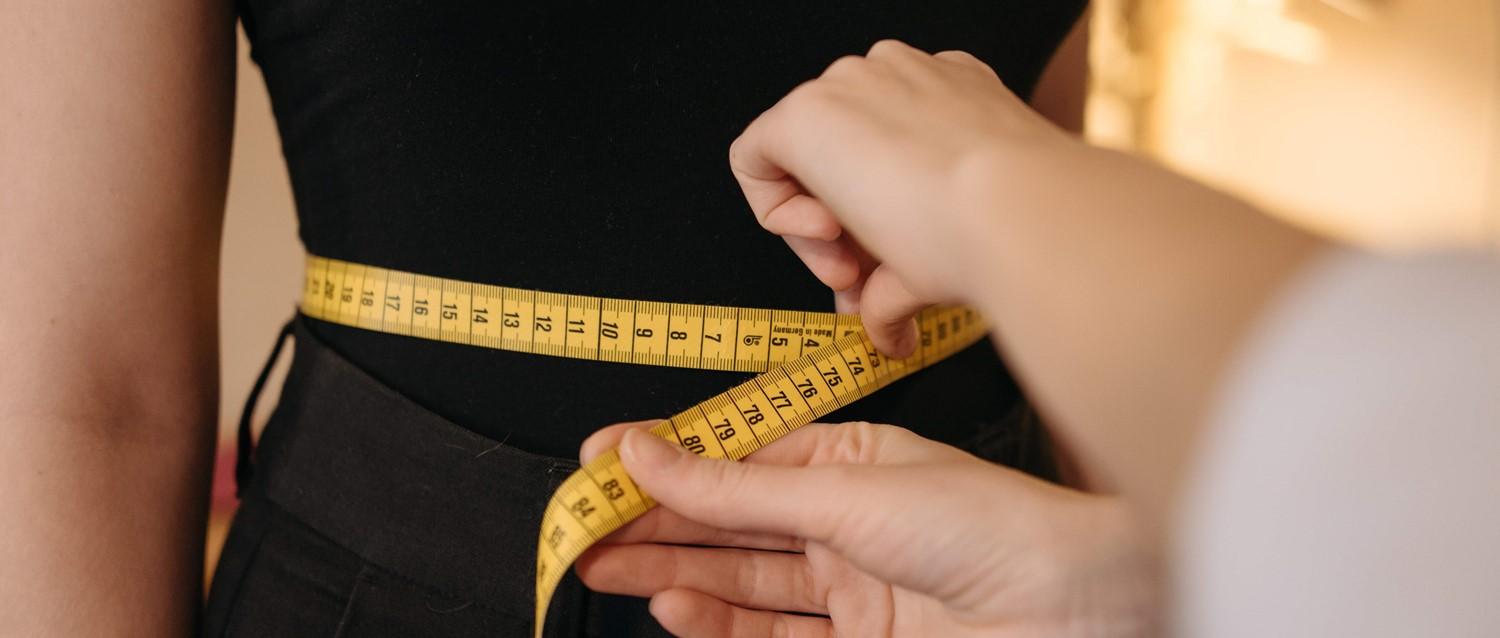
What your waist measurement says about your health
Peer reviewed by Dr Krishna Vakharia, MRCGPAuthored by Gillian HarveyOriginally published 29 Jun 2022
Meets Patient’s editorial guidelines
- DownloadDownload
- Share
- Language
- Discussion
We all know that if we consume excess calories and fail to burn them off, our body stores them as fat. Many of us are also aware of our problem areas - perhaps we're prone to gaining weight on our thighs, or around our middle. A little extra weight may not be harmful to our health, so how do we know if we're still in a healthy zone?
In this article:
Continue reading below
Is BMI accurate?
Keeping within a healthy weight range is a good way to improve our overall health and many doctors recommend we measure BMI (body mass index) to help calculate our body fat percentage. However, while a BMI calculator can be a useful tool, it is not always accurate - for example, those who weigh more due to muscle type.
A new way of measuring health
Now NICE guidelines have been created to suggest health practitioners and those wanting to assess their overall weight profile add a waist measurement into the mix (for those with a BMI below 35). Rather than focusing on a specific figure, the guidelines advise people keep their waist circumference at "less than half of their height".
It is hoped that this additional waist measurement will help to identify those carrying excess abdominal fat, which can be a health risk for many obesity-related diseases, including type 2 diabetes, hypertension (high blood pressure) and cardiovascular disease.
Continue reading below
What is a healthy waist measurement?
It is hoped that this simple way of measuring will help individuals to better assess their risk of developing diseases associated with being overweight and hit their weight loss goals. When commenting on the NICE guidelines, Professor Rachel Batterham, consultant in obesity, diabetes, and endocrinology, at UCL said: "Increased fat in the abdomen increases a person's risk of developing several life-limiting diseases, including type 2 diabetes and heart disease. Waist-to-height ratio is a simple, easy-to-use measure that identifies people who are at increased health risk and would benefit from weight management support to improve their health."
Two types of fat
If your waist measurement is above what it should be, it is likely that you are carrying excess fat in your abdomen. But there are two types of fat we may store in this area, and one is more dangerous than the other.
Subcutaneous fat - this is the type of fat stored under the skin that can be felt from the outside.
Visceral fat - this type of fat may be harder to detect, as it is stored more deeply in the body and can form around organs. According to a study released in 2015, this type of fat increases the risk of lifestyle diseases such as diabetes, but also cancer and even our risk of sudden death. This is because it creates toxins in the body, including cytokines - a type of toxin that raises your risk of heart disease and makes your body less reactive to insulin.
How to measure your waist
To measure your waist:
Find the top of your hips below your belly button and ribs.
Wrap a tape measure around your waist and measure the circumference.
Keep your abdomen relaxed and natural when measuring your waist.
As a guide, the NHS recommends losing weight regardless of your height or age, if your waist measurement is:
94 cm (37 inches) for men.
80 cm (31.5 inches) for women.
Continue reading below
How to reduce your waistline
It's common for people to think that doing targeted exercise such as sit-ups will reduce your waistline and help you lose weight.. However, "spot reduction is a myth," says David Starr Performance Coach and Nutritionist. "You can't choose where you lose fat from, and there aren't any particular exercises that make you lose fat from your stomach as opposed to other areas.
"In terms of exercise, the standard advice for people who want to lose fat from any area, is to be more physically active and move more - whether this means more walking, using the stairs instead of the lift, or other activities," explains Starr.
In addition, increasing resistance training can also increase weight loss, as muscle burns more calories than fat, even at rest.
What about diet?
To lose excess fat and increase overall fitness, a healthy diet and reducing your calorie intake is a must for successful weight loss. One way of ensuring we get maximum benefit from the food we eat is to focus on fresh, unprocessed ingredients. "Keep all your food as fresh and unprocessed as possible," says Starr. "Focus on nutritionally dense foods such as whole grains. Frozen veg is also a great addition to the diet as it is often frozen very quickly and as a result maintains vitamin content."
You may think you're eating the right things, but are you eating them at the right times? "It's important to consume enough protein at the right times. This macronutrient helps the body to build and maintain muscle mass and the creation of hormones," explains Starr.
Crucially, it's beneficial to consume your protein in small portions throughout your day, rather than tucking into an enormous steak in one meal. "Most people should aim to have a significant protein portion in each meal. Good protein sources include meat, fish, dairy, eggs, or cheese, as well as legumes, nuts, and grains," he says.
While carbohydrates are an important source of fuel, it's a good idea to avoid 'refined' carbohydrates such as pasta, white bread, rice, and potatoes. "These will increase your blood sugar level and if you're not exercising, the body will store the energy as fat," says Starr. "Choose more complex carbohydrate sources such as leafy veg, wholegrain bread and whole-wheat pasta. They will give you a flatter blood sugar level."
How to reduce bloating
It's important to remember that bloating can also increase a waist measurement, potentially causing unnecessary anxiety. To keep any bloating in check, make sure you include soluble fibre in your diet - sources include oats, peas, and carrots - and make sure you consume probiotic foods such as natural yoghurt and sauerkraut which can have great health benefits. "This helps your stomach to digest food more efficiently, and reduces bloating," explains Starr.
While there's no quick fix or targeted exercise to get that waist measurement down, adopting healthy habits in terms of diet and exercise will help to reduce visceral and subcutaneous fat, as well as improving our overall health.
Patient picks for Obesity and weight loss

Healthy living
How does losing a lot of weight affect your mental health?
It's no secret that, if you need to lose weight, reaching your target weight can bring a confidence boost. But it's important to acknowledge the psychological pitfalls that can arise along the way.
by Abi Millar

Healthy living
Understanding internalised weight bias: a guide to self-acceptance
When it comes to weight loss, conversations often centre on the numbers we see on the scales. Yet one important issue that receives far less attention is internalised weight bias - when someone absorbs negative societal stereotypes and beliefs about body weight and directs them towards themselves. We explore what internalised weight bias is, how it impacts those who have it, the signs to be aware of, and practical ways we can support ourselves and others in overcoming it.
by Victoria Raw
Continue reading below
Article history
The information on this page is peer reviewed by qualified clinicians.
29 Jun 2022 | Originally published
Authored by:
Gillian HarveyPeer reviewed by
Dr Krishna Vakharia, MRCGP

Ask, share, connect.
Browse discussions, ask questions, and share experiences across hundreds of health topics.

Feeling unwell?
Assess your symptoms online for free
Sign up to the Patient newsletter
Your weekly dose of clear, trustworthy health advice - written to help you feel informed, confident and in control.
By subscribing you accept our Privacy Policy. You can unsubscribe at any time. We never sell your data.